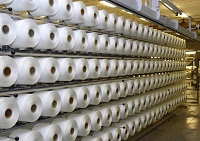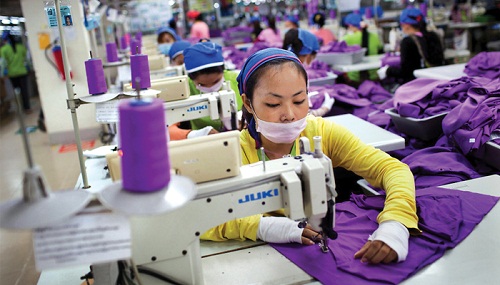"Poised delicately between a slow recovery of a second slide, the global economy demands a collaboration between brands and solutions for the entire supply chain. It is important for brands now to deliberate on the current situation and formulate future strategies. Continuous global crisis, high oil prices and turmoil & political instability is creating huge concern for textile business with lack of support from two of the biggest world markets, the US and Europe adding to its woes."
 Poised delicately between a slow recovery of a second slide, the global economy demands a collaboration between brands and solutions for the entire supply chain. It is important for brands now to deliberate on the current situation and formulate future strategies. Continuous global crisis, high oil prices and turmoil & political instability is creating huge concern for textile business with lack of support from two of the biggest world markets, the US and Europe adding to its woes.
Poised delicately between a slow recovery of a second slide, the global economy demands a collaboration between brands and solutions for the entire supply chain. It is important for brands now to deliberate on the current situation and formulate future strategies. Continuous global crisis, high oil prices and turmoil & political instability is creating huge concern for textile business with lack of support from two of the biggest world markets, the US and Europe adding to its woes.
China continues to be the world leader in most fields with its textile and clothing exports rising fourfold since 2000.But its capacity development is likely to peak soon with a decline in government investment and increasing competition from other mills.
Challenges facing textile industry
Some of the major challenges that the textile industry faces today include a strong dollar and depression of global currencies, high oil prices, a stagnant US economy, national protectionist policies, greater importance of emerging economies, hunting new consumer markets, investment on product mix and research, hunting new low cost production facility. Another priority challenge includes bringing back the globalisation process and creating one big market.
Since the last few months, Chinese middle class has been critical of the government’s economic and sociopolitical policies. This criticism, especially evident in online public discourse, focuses on the way the government has handled its relations with the US. This discontent among the middle-class threatens President Xi Jinping’s broader position and economic vision. It might thwart latent demand in major manufacturing centers, specifically in Southeast Asia. Though India will continue to be a major textile production center catering to huge domestic market, imports from China, Bangladesh are likely to cause a disturbance in the supply chain.
criticism, especially evident in online public discourse, focuses on the way the government has handled its relations with the US. This discontent among the middle-class threatens President Xi Jinping’s broader position and economic vision. It might thwart latent demand in major manufacturing centers, specifically in Southeast Asia. Though India will continue to be a major textile production center catering to huge domestic market, imports from China, Bangladesh are likely to cause a disturbance in the supply chain.
Strategies to survive tough market conditions
The Middle East is a big importer of textile products. But the effects of global economic slowdown have also been felt on the textile business of the Middle East. To survive competition, the industry needs to focus on integrating research and innovations in the textile business with quality control made an everyday assignment. It should also leverage new opportunities in emerging segments such as defence textile, camouflage fabrics, industry textiles and coated fabrics. Textiles in medical sector, construction industry also offer great opportunities for the sector.
It is important for brands to look at their customers more as partners. They cannot just focus on prices but have to also ensure reliability, expertise, quality and service are important for a successful business relationship. Developing the trend of global trade requires a tremendous study of trend, forecasting, political situation et al. It is getting complicated everyday as recession in various countries is causing fluctuations. However, in spite of all these business has to go on.












